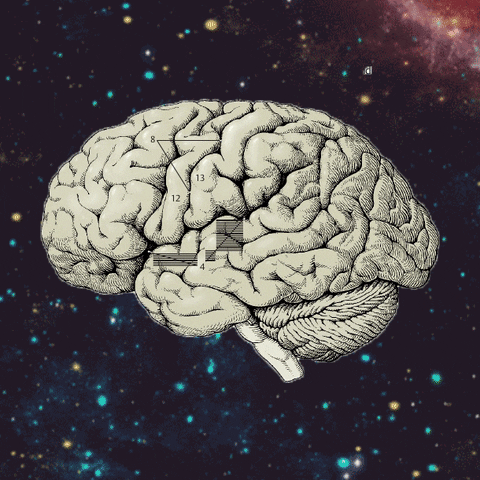Everyone who has experienced pain knows what it is, but how does science define it?
Australia’s national peak body Pain Australia sums it up as “an unpleasant feeling, causing a reaction to protect the part that is painful”.
But did you know that many factors affect someone’s experience of pain? In fact, we all feel pain differently.
It’s an important protective mechanism. Feeling pain is our body’s way of alerting us to a threat so we don’t hurt ourselves any further.

And pain is not just a physical sensation – it’s influenced by our personalities, attitudes and beliefs. It can also influence our mental and emotional health.
Types of pain
Pain can be classified in many different ways.
By the mechanism of injury
There’s nociceptive pain. Nociceptors are receptors found all over our body, especially in our skin and organs. When nociceptors are stimulated, they send electrical signals to our brain, causing us to feel the sensation of pain. This process is called nociception.
It’s classified into visceral pain from damage to internal organs (such as appendicitis) or somatic pain from damage to tissues (skin, muscles, joints and bones), such as a broken leg or strained hamstring. Nociceptive pain is the most common type of pain.
And then there’s neuropathic pain. This occurs because of nervous system damage or dysfunction. This damage causes nerves to misfire and send pain signals to our brain. Neuropathic pain can be described as burning, freezing, numbness, tingling, shooting or stabbing sensations. Diabetes is a common example of this type of pain.
By the duration
Acute pain is short term, has a specific cause, generally lasts less than 6 months and disappears once the cause is treated. Common causes of acute pain include broken bones, surgery, labour and childbirth, dental work, cuts and burns.
Chronic pain can last for years and range from mild to severe. While past injuries can cause chronic pain, there’s sometimes no reason for it. Common causes of chronic pain include migraines, lower back pain, arthritis, nerve damage and inflammation.
By etiology (aka origin)
Malignant pain is associated with cancer or its related treatments, such as chemotherapy.
Non-malignant pain is pain not associated with cancer, which can range from a headache to irritable bowel syndrome.
How do we feel pain?
Pain is a complex physiological process. The sensation of pain involves communication between our nerves, spinal cord and brain along what’s known as the pain pathway.
Let’s break it down. Imagine you’re walking barefoot in your backyard and step on a shard of glass, which pierces your skin. Your nociceptors are stimulated by the pressure and tissue damage. Nociceptors are connected to neurons (which make up nerves).
When the nociceptor is activated, it sends an electrical signal up the nerve fibre. Nerve fibres are bundled together to make peripheral nerves, which enter the spinal cord.
The electrical signals are transmitted from one neuron to another across spaces known as synapses via neurotransmitters. These are basically chemical messengers that enable neurons to communicate.
The electrical signals are transmitted towards the brain where the information reaches the thalamus. The thalamus acts as a sorting station by receiving the pain information and relaying it to the parts of the brain responsible for physical sensations, thinking, decision making and emotions, so we can react and respond appropriately.

In this case, it might be yelping “ouch!”, lifting your foot, removing the splinter of glass, washing the cut and sticking a band aid over it. The protective mechanism kicks in when, the next time you head outside, you slide some shoes on.
Can we control our pain?
For as long as humans have experienced pain, we’ve tried to understand and ‘beat’ it. There are a bunch of different theories about pain. While we may not be able to control it, there are points along the pain pathway where the signals can be modified.
One place is in an area known as the dorsal horn, where the nerve signals reach the spinal cord. Here, a gate mechanism decides whether to let the pain signals through, block, decrease or amplify them. This is called the gate control theory of pain.
This is why, for example, if you stub your toe and rub the area repeatedly, the pain seems to lessen. What’s happening in that scenario is the signal from the sensation of rubbing your toe temporarily blocks the pain signal travelling from your toe to the brain. Another example would be when an athlete is injured but doesn’t feel any pain until after a few minutes or hours.
Interestingly, where you feel pain isn’t always where the pain comes from. When someone has a heart attack, they feel pain in the jaw, arm, abdomen and back. This is called referred pain and happens because signals from different parts of the body come together on the same neurons in the spinal cord.
The gate control theory helps explain how the brain influences your experience of pain including:
- your emotional state (stress, depression or anxiety can increase your experience of pain)
- memories of previous pain (that trip to the dentist!)
- beliefs and values (your upbringing can affect how you think you should react to a painful experience and what can be done, such as get an X-ray)
- demographics (older people may have higher pain thresholds, women report feeling more severe pain than men)
- social and cultural influence
- expectations of and attitudes towards pain.
So two people with the exact same injury could have very different experiences of pain.
Pain threshold and tolerance
What’s the difference between a pain tolerance and a pain threshold? Your pain threshold is the minimum point at which something causes you pain. Your pain tolerance is the maximum amount of pain you can handle.
They vary from person to person, based on all the factors influencing their individual perception of pain.
Curious about your pain threshold? Try taking one of these questionnaires:
- McGill Pain Questionnaire
- Brief Pain Inventory
- Oswestry Disability Index
- Wong-Baker FACES pain-rating scale (which you may have seen at your doctor’s office)









